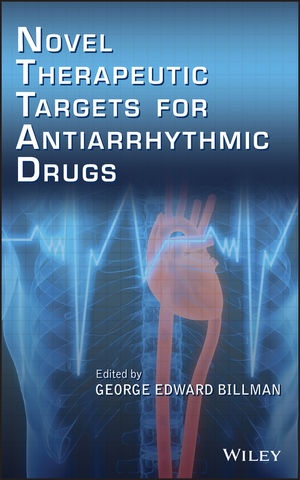Novel Therapeutic Targets for Antiarrhythmic DrugsISBN: 978-0-470-26100-2
Hardcover
616 pages
January 2010
 This is a Print-on-Demand title. It will be printed specifically to fill your order. Please allow an additional 10-15 days delivery time. The book is not returnable.
|
||||||
PROFILES POTENTIAL TREATMENT APPROACHES FOR CARDIAC ARRHYTHMIAS
Cardiac arrhythmias of ventricular origin are responsible for the deaths of nearly half a million Americans each year while atrial fibrillation accounts for about 2.3 million cases per year, a rate that is projected to increase 2.5 fold over the next half century. Effectively managing these cardiac rhythm disorders remains a major challenge for both caregivers and the pharmaceutical industry. Filling a gap in the current literature, Novel Therapeutic Targets for Antiarrhythmic Drugs presents the latest treatments for cardiac arrhythmias alongside comprehensive presentations of basic cardiac physiology and pharmacology.
Written by leading experts in their research areas, this invaluable resource offers both practitioners and researchers a one-stop guide that brings together previously dispersed information. The text consists of four sections:
- Section One comprehensively reviews basic cardiac electrophysiology, the mechanisms responsible for arrhythmias in the setting of ischemia, and basic pharmacology of antiarrhythmic drugs.
- Section Two addresses safety pharmacology, including the concept of "repolarization reserve," safety challenges, and regulatory issues for the development of novel antiarrhythmic drugs.
- Section Three describes several novel pharmacological targets for antiarrhythmic drugs, including both ion channel and non-ion channel targets.
- Section Four describes promising non-pharmacological antiarrhythmic interventions including selective cardiac neural disruption or nerve stimulation, aerobic exercise training, and diet (omega-3 fatty acids).
Offering an unparalleled look at the current state and future direction of cardiac arrhythmia treatment, Novel Therapeutic Targets for Antiarrhythmic Drugs provides an important resource to advanced students, working researchers, and busy professionals alike.



